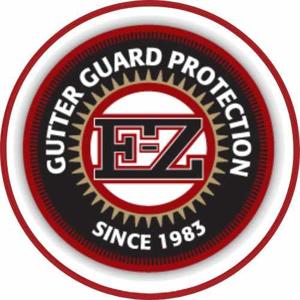As seasonal storms, heavy rains, and falling leaves take their toll on homes, gutter maintenance remains a top priority. Clogged gutters can cause water overflow, foundation damage, mold growth, and roof deterioration. In 2025, several types of gutter guards have proven especially effective at keeping water flowing and debris out, each with unique strengths that cater to different home environments.
1. Micro-Mesh Guards – Best for Fine Debris
Micro-mesh gutter guards are considered the gold standard for filtration. They feature a tightly woven mesh that blocks everything from large leaves to fine shingle grit and pine needles, while still allowing water to flow freely. High-quality models often use stainless steel or aluminum frames for durability and can last 15–20 years with minimal maintenance. These are ideal for homes surrounded by trees that shed small debris.
Why they work: The fine mesh structure physically prevents even tiny particles from entering, reducing the need for frequent cleaning and lowering the risk of blockages.
2. Screen Guards – Best Budget Option
Screen-style guards use perforated metal or plastic sheets that sit over the gutters. They’re affordable, easy to install, and allow good water flow, though smaller debris may still pass through. These guards are best suited for areas with larger leaves and less fine debris.
Why they work: The angled or domed surfaces encourage leaves to blow away naturally, while holes let water drain quickly during heavy rain.
3. Reverse-Curve Guards – Best for High Water Flow
Also known as surface-tension guards, these have a curved design that directs rainwater into the gutter while leaves and debris slide off the edge. They’re particularly effective in areas with intense rainfall, as their shape maximizes water capture without clogging.
Why they work: The physics of surface tension guides water into the gutter, while solid covers keep out debris.
4. Foam Inserts – Best for Pine Needles
Foam gutter guards are fitted directly inside the gutter channel. The porous foam allows water to filter through while blocking leaves, seeds, and needles. They work well in wooded areas with constant fine debris, though they may require more frequent replacement than metal guards.
Why they work: The open-cell foam structure acts as a barrier to debris while maintaining consistent drainage.
5. Brush Guards – Best for Quick Maintenance
Brush-style guards resemble oversized bottle brushes that sit inside the gutter. They block larger debris while letting water pass through the bristles. This design is easy to install and remove for cleaning, making it a low-maintenance choice for homeowners who prefer periodic upkeep.
Why they work: The bristles create a physical barrier without restricting water flow, making them a simple yet effective solution.
Why These Gutter Guards Work in 2025
In recent testing and field use, three factors stand out among top-performing gutter guards:
Fine Filtration: Micro-mesh and foam guards excel at blocking small debris, including pine needles and roof grit.
Durability: Metal-framed options withstand weather extremes and resist rust, extending their lifespan.
Low Maintenance: Guards that shed debris naturally or are easy to remove for cleaning save time and effort.
When selecting a gutter guard, consider climate, debris type, installation style, and budget. Even the best gutter guard still benefits from periodic inspection to ensure optimal performance.
Final Thoughts
The top gutter guards of 2025 share a focus on blocking debris without sacrificing water flow. While micro-mesh systems offer unmatched protection for most environments, budget-friendly screen guards and specialized foam or brush designs also provide excellent value in the right situations. Choosing a guard suited to your home’s unique needs ensures cleaner gutters, reduced maintenance, and long-term protection for your property.


Write a comment ...